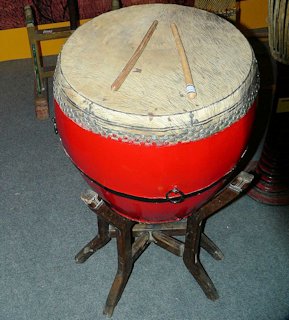
|
Chinese Musical Instruments - Instrument 25
Dagu - Percussion Instrument
The history of Chinese percussion instruments is longer than any other section
of traditional Chinese instruments. The character of the drum was first
recorded in the ancient inscriptions on oracle bones and tortoise shells dating
from the Shang Dynasty. At that time (1562-1066 BC) more than 50 percent of
Chinese instruments were percussive in nature. Jilin's folk heritage includes
Han wind music and dongbei dagu (drum storytelling), yangge music, the wuliger
and halaibo singing traditions of the Mongols.
|
| Dagu - Percussion Instrument | |
| ⇦ Back to Instrument 24 Return to Thumbs Page 4 On to Instrument 26 ⇨ | |